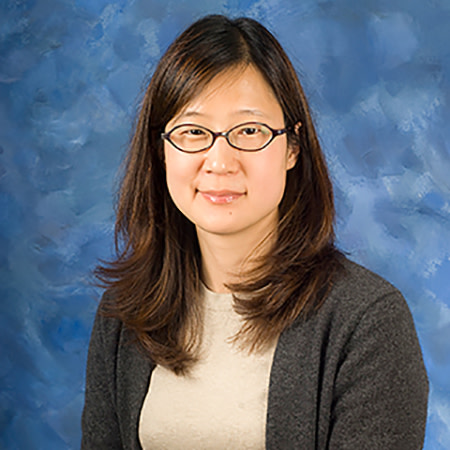Collaborating to treat pediatric cancer patients
A pediatric oncologist and dermatologist team up to diagnose and treat a transplant patient experiencing sclerotic graft-versus-host disease.
Dr. Huang's story

One patient of mine, a 12-year-old boy, was referred to me after receiving a stem cell transplant. His eczema seemed to be worsening even though he was being treated with topical ointments. When I examined him, even though there were areas that were red and scaly, he had areas that suggested early, but serious, sclerotic graft-versus-host disease (GVHD). GVHD occurs when the donor cells attack the patient’s cells and can be life-threatening if undiagnosed and untreated. I connected with his oncologist and together we were able to promptly treat his condition. His GVHD symptoms would have eventually been recognized, but likely much later, and the outcome may have been much worse.
We created a dermatology clinic in coordination with the Dana-Farber Cancer Institute to help transplant patients like him. Transplant patients often get rashes from their treatment in preparation for a transplant, and afterwards may be at risk for skin infections and GVHD. Following transplantation, patients may take immunosuppressive drugs to treat GVHD, which puts them at higher risk for skin cancer. They also may have long term changes to their skin including hair loss and scarring. Dermatologists and oncologists work hand-in-hand to navigate the best treatment for a patient pre- and post-organ transplantation.
The relationships between dermatologists and oncologists continue to strengthen, and so does the positive impact on patients. Our collaboration helps to ease what is a difficult time in patients’ lives.
The oncologist's perspective
"Dr. Huang has a specific interest in bone marrow transplant patients and often travels to our clinic to see our patients. We work closely together because when patients are undergoing a transplant, they are at higher risk for skin diseases. Her presence in our clinic makes it more convenient for the patient and family to be seen in one location, as well as to be treated quickly and effectively from the outset."
– Jennifer Whangbo, MD, PhD
Oncologist, Dana-Farber Cancer Institute and Boston Children’s Hospital

Patient & physician stories
Learn how board-certified dermatologists have helped patients with serious skin disease and collaborated with other doctors to enhance patient care.
Browse all stories Find a Dermatologist
Find a Dermatologist
 Member directory
Member directory
 AAD Learning Center
AAD Learning Center
 2025 AAD Innovation Academy
2025 AAD Innovation Academy
 Need coding help?
Need coding help?
 Reduce burdens
Reduce burdens
 Clinical guidelines
Clinical guidelines
 Why use AAD measures?
Why use AAD measures?
 Latest news
Latest news
 New insights
New insights
 Physician wellness
Physician wellness
 Joining or selling a practice?
Joining or selling a practice?
 Promote the specialty
Promote the specialty
 Advocacy priorities
Advocacy priorities
